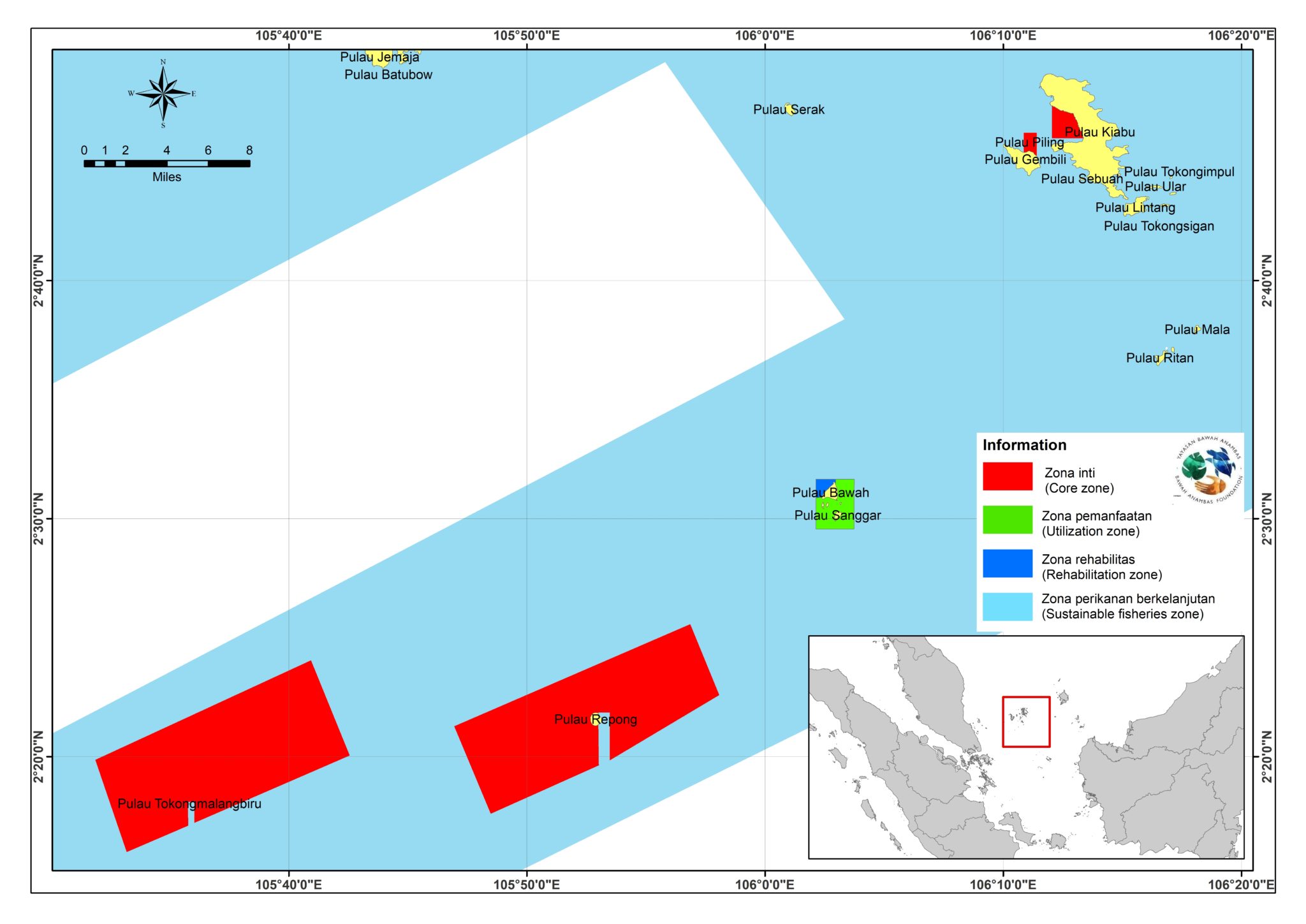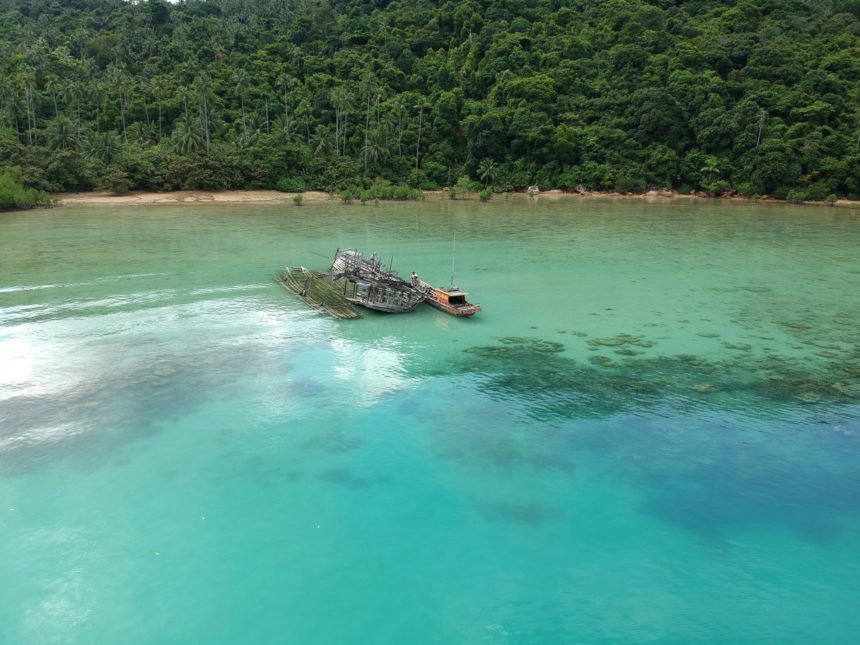Anambas Islands is more popularly known as a tropical paradise with beautiful coastal and marine life due to its close proximity to the Coral Triangle area. What many people are not familiar with is the fact that 1.2 million hectares of the regency’s area have been designated as a Marine Protected Area (MPA), making Anambas one of the largest conservation areas in Indonesia. MPA by definition is a marine area that is protected and managed through a zoning system to achieve sustainable management of its natural resources and environment.
Officially titled Taman Wisata Perairan (TWP) Anambas, or Anambas Marine Recreational Park, the 1.2 ha conservation area is currently being managed by a local government body called LOKA Kawasan Perairan Nasional Pekanbaru (LKKPN Pekanbaru). We as a non-profit organization in Anambas, work hand-in-hand with LKKPN Pekanbaru in doing our marine conservation work in the area.
There are four different zones implemented in TWP Anambas, below is the breakdown of each of those zones:

Core Zone
Also known as the no-take zone, this area is for research and education purposes only, with limited to no human entry at all. Inside the core zone, damaged reefs can recover more easily and fish populations can increase rapidly. There are 26 locations listed as core zones at TWP Anambas including Teluk Raya and Gembili Island. Every year we, alongside LKKPN Pekanbaru, do a Reef Health Monitoring (RHM) activity to evaluate the reef conditions in these locations.
Sustainable Fisheries Zone
The sustainable fisheries zone is divided into two sub-zones: fishing zone that covers 1/3 of the Anambas seas and fish cultivation zone located in nine regions including one at the Raya bay in Kiabu that is right next to the core zone. We regularly meet with fishermen and local communities to discuss about areas where sustainable fishing is allowed, what are cultivation zone and sustainable aquaculture. By engaging with the locals we want to encourage their participation in the marine conservation work and to educate them about the importance of protecting the Anambas oceans.
Utilization Zone
There are 27 locations listed as utilization zones in Anambas, one of them is Bawah Island. The utilization zone is designed to improve eco-tourism sector in the Anambas, and since Bawah Reserve resort is on Bawah Island, this island has become a sustainable tourism area where the resort’s guests can do underwater activities such as diving and snorkeling.
Rehabilitation Zone
The rehabilitation zone is a recovery zone for areas that have suffered environmental damages. Bawah Island actually holds a unique status of being both in the utilization and rehabilitation zones. Long before Bawah Reserve was established, the island suffered from destructive and illegal fishing practices that have created long-lasting damages to its marine ecosystem. Since our establishment back in 2018, we’ve been working to restore and maintain the ecosystem in Bawah. With the help from Bawah Reserve’s team we have two main activities there: turtle conservation that aims to protect turtle nests and help release hatchlings safely to the ocean; and reef restoration that utilizes artificial reefs such as coral spiders and hexadomes.
Source:
KEPMEN-KP No 53 tahun 2014 : Rencana pengolahan dan zonasi taman wisata perairan kepulauan anambas provinsi kepulauan riau tahun 2014-2034

